Top 5 Most Beautiful Tiny Fungi You Can Find in NYC… If You Really Look.
By Natural Areas Conservancy on October 17, 2025
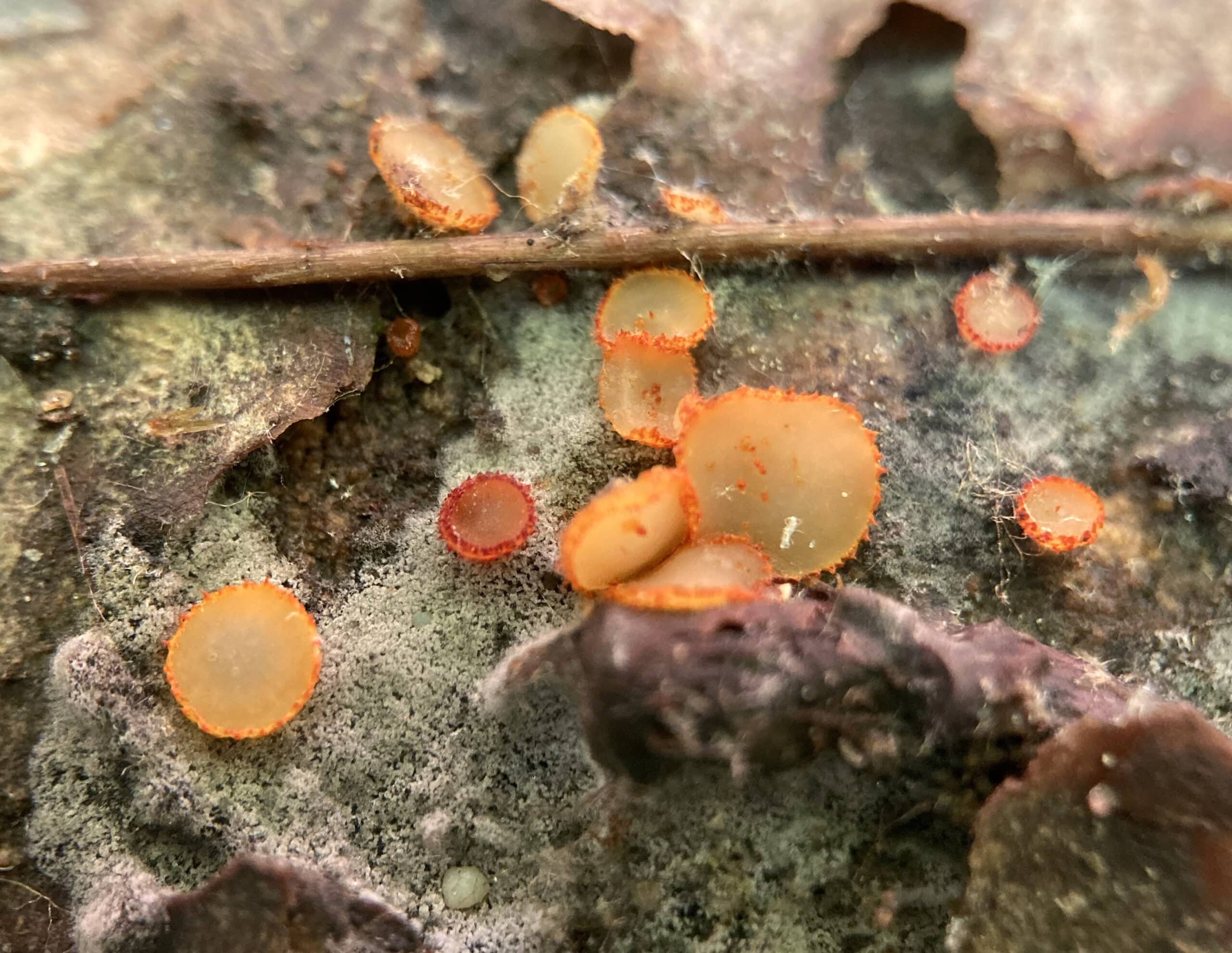
By Natural Areas Conservancy on October 17, 2025

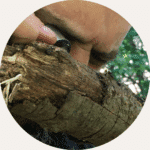 By Ethan Crenson, President of the New York City Mycological Society
By Ethan Crenson, President of the New York City Mycological Society Ethan has been a member of the New York Mycological Society (NYMS) since 2008, and recently took on the role of president in 2025. He is an ascomycete specialist, concentrating his efforts on dots on sticks, scabs on wood, and other under-appreciated fungi. You can find him on Instagram and iNaturalist.
New York City is home to thousands of species of fungi—some big, some small, and some positively tiny! Read on below for five of my favorite tiny fungi you can find right here in NYC.
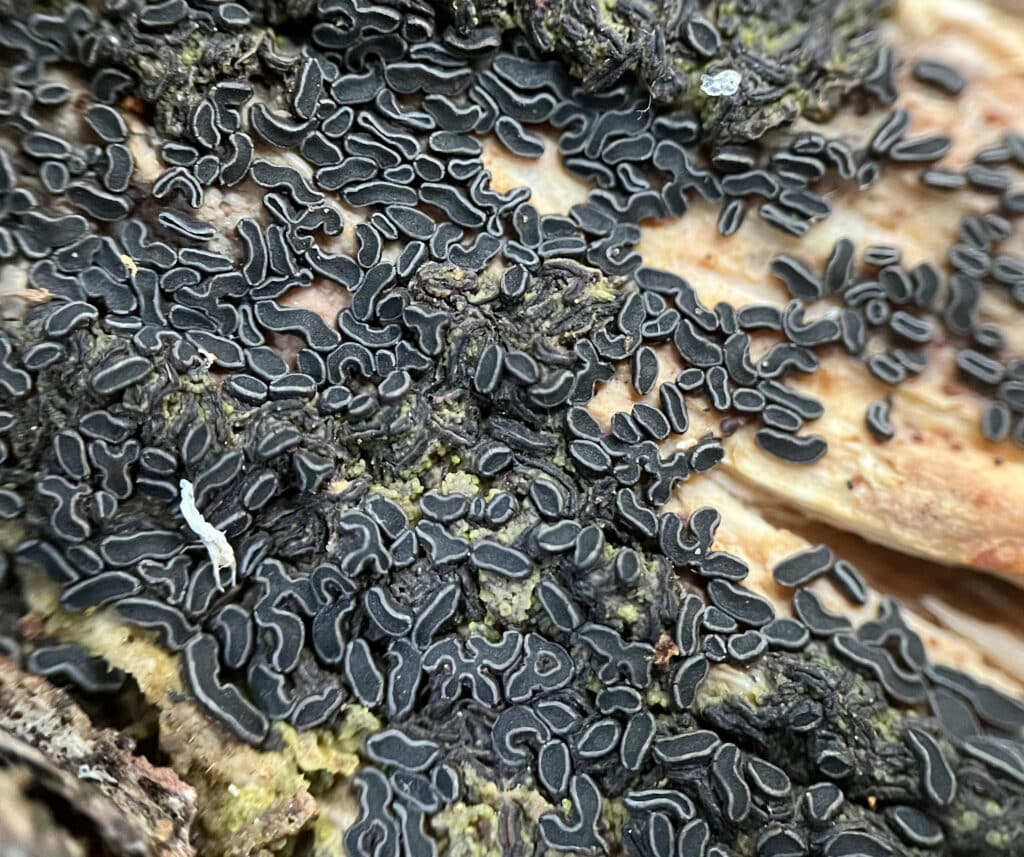
Angelina rufescens, photo courtesy of Ethan Crenson
This ascomycete is a celebrity in the New York Mycological Society. So understated, so beautiful! When fresh and thriving, it appears in dense sheets on the wood (and sometimes bark) of the sides and cut ends of oak logs. So far it is only known from America east of the Mississippi. The fertile surface is a gray, flat lozenge or contorted shape with a light gray margin. Imagine a gray sofa cushion with white piping. Now imagine thousands of them. The genus is monotypic, and Angelina rufescens (originally called Hysterium rufescens) was first described by Lewis David von Schweinitz in 1822. From 1822 until its reappraisal by Jason Karakehian and collaborators in 2014, Angelina rufescens had never been illustrated in a publication. The lack of attention has since been corrected—and then some. Its location in Cunningham Park in Queens is well known to the NYMS. And because it is photographed and posted to iNaturalist by multiple members of the NYMS on each of our visits, it is one of the most frequently observed small fungi in that park. Apologies for the observer bias.
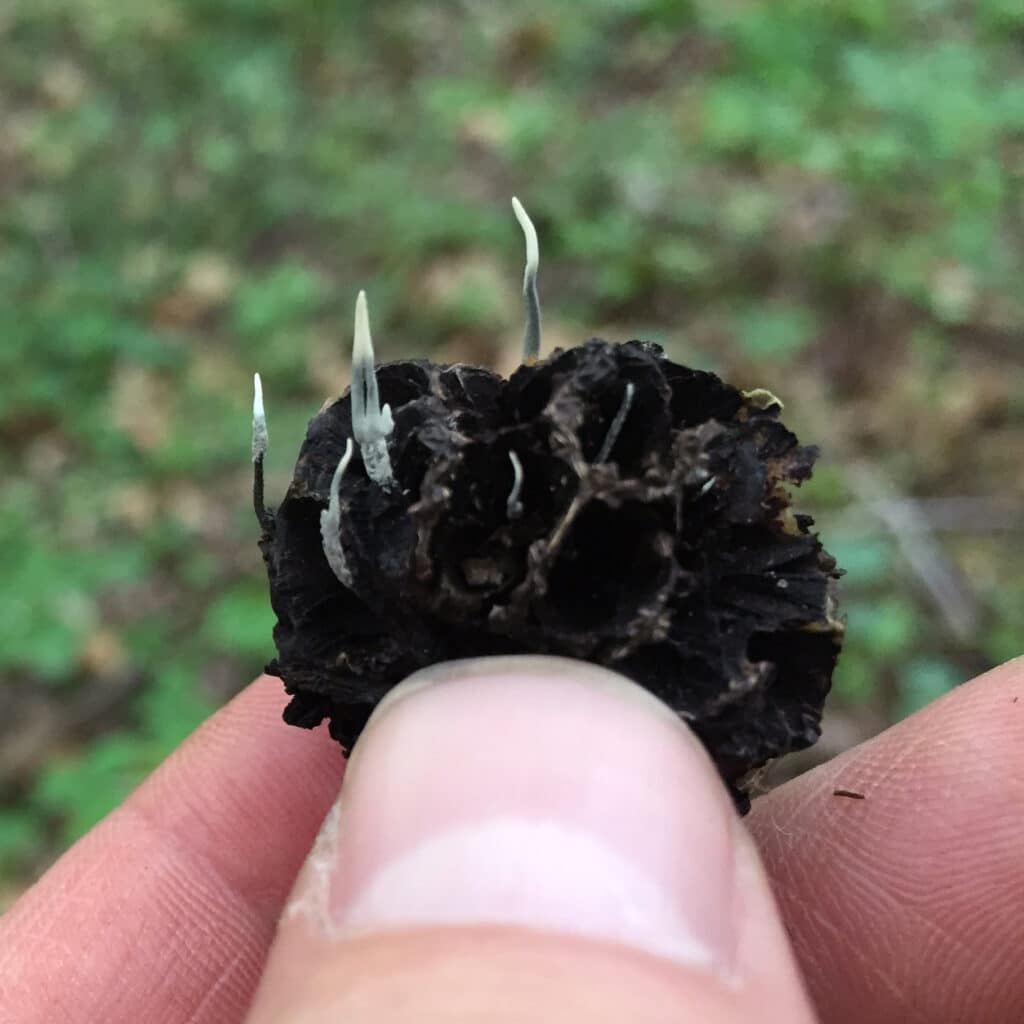
Xylaria liquidambaris anamorph, photo courtesy of Ethan Crenson
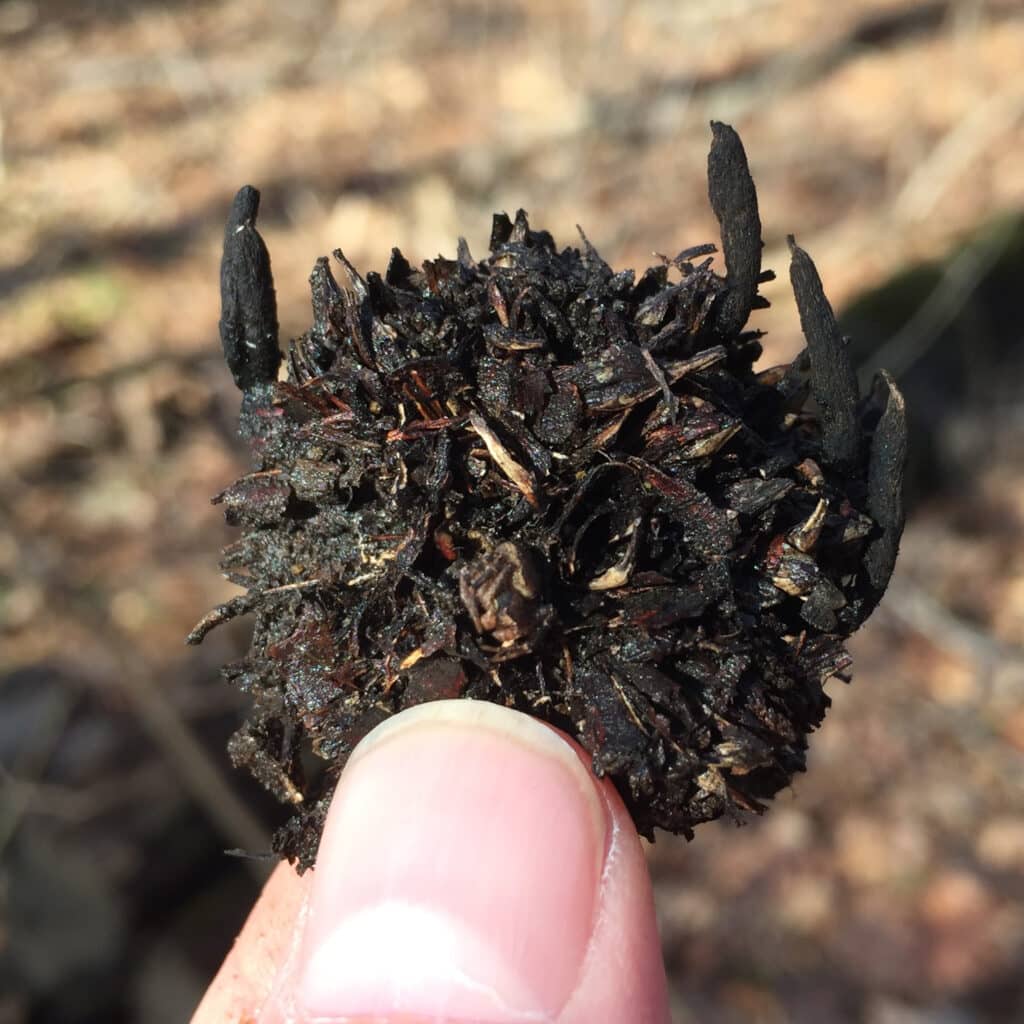
Xylaria liquidambaris teleomorph, photo courtesy of Ethan Crenson
If you have ever flipped through a general field guide to mushrooms, you might have seen (usually at the back) a brief nod to the pyrenomycetes—a group of hard carbonaceous mushrooms that sequester their spore bearing surfaces inside chambers called perithecia. The poster species for this group of fungi is usually Dead Man’s Fingers, Xylaria polymorpha. But the genus Xylaria is extremely diverse, and there are probably at least nine species in New York City, including some undescribed species. Xylaria liquidambaris is the smallest we find here, and probably the weirdest. It fruits only from the seed pods of Sweetgum trees. Finding it can be a challenge. You won’t find it on recently dropped Sweetgum seeds. It tends to fruit from the seeds that have been on the ground a few years—the ones that have blackened and compressed. Since X. liquidambaris is also black, it can be tough to spot. It’s a bit like finding a four leaf clover. When it begins to grow in the spring it is a bit more noticeable. It starts out in its asexual stage with a gray-green dusty surface with a sharp white tip. The dusty surface consists of the conidiospores, asexual or clone spores that the Xylaria produces early in its development. However, later it turns black and gets a swelling near the apex where the perithecia are located. Xylaria liquidambaris is an endophyte, meaning that it is a species of fungus that lives inside the cells of the Sweetgum tree without causing the tree any harm. When the tree drops its seeds, it’s time for the mushroom to send up fruiting bodies in order to reproduce.
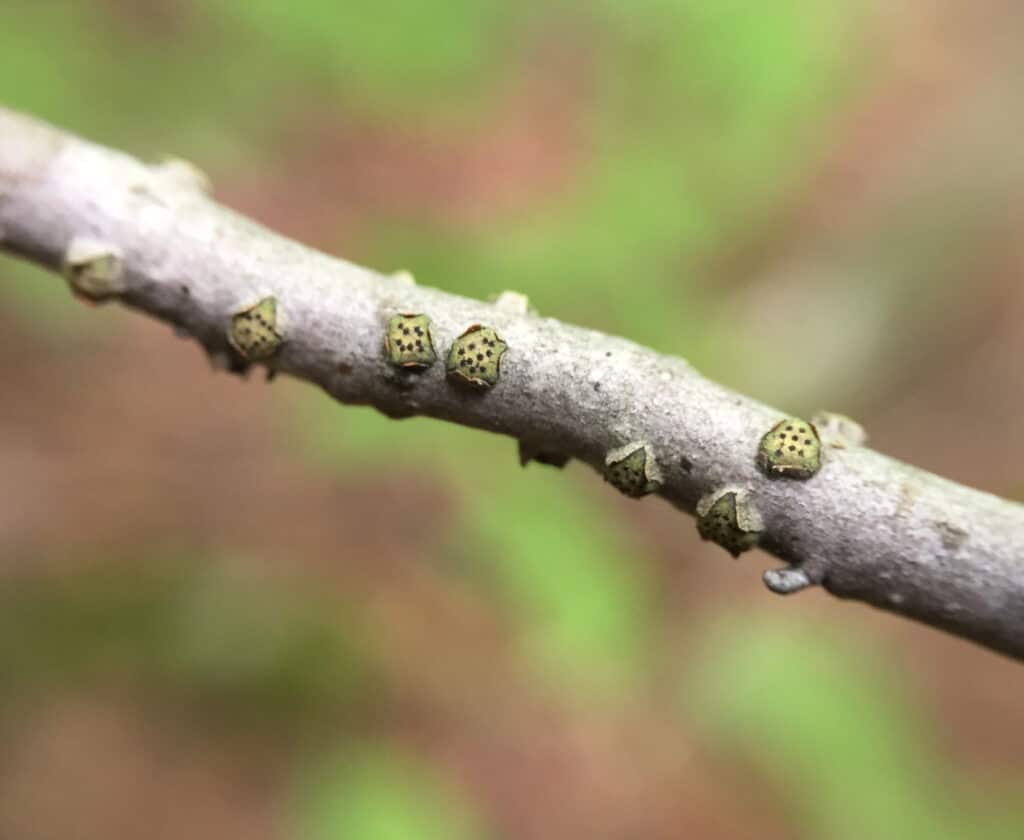
Diatrype virescens, photo courtesy of Ethan Crenson
This is another pyrenomycete, but it is a bit flashier than X. liquidambaris. It is a bright green disc with some yellowish highlights and black dots on the surface. You’ll find Diatrype virescens only on twigs of American Beech, pushing aside the bark in stellate petals. It fruits on the dead fallen twigs in the late winter and spring, but can sometimes be found into the summer. The fruiting bodies don’t keep their green color for very long. The green fades to black over time.
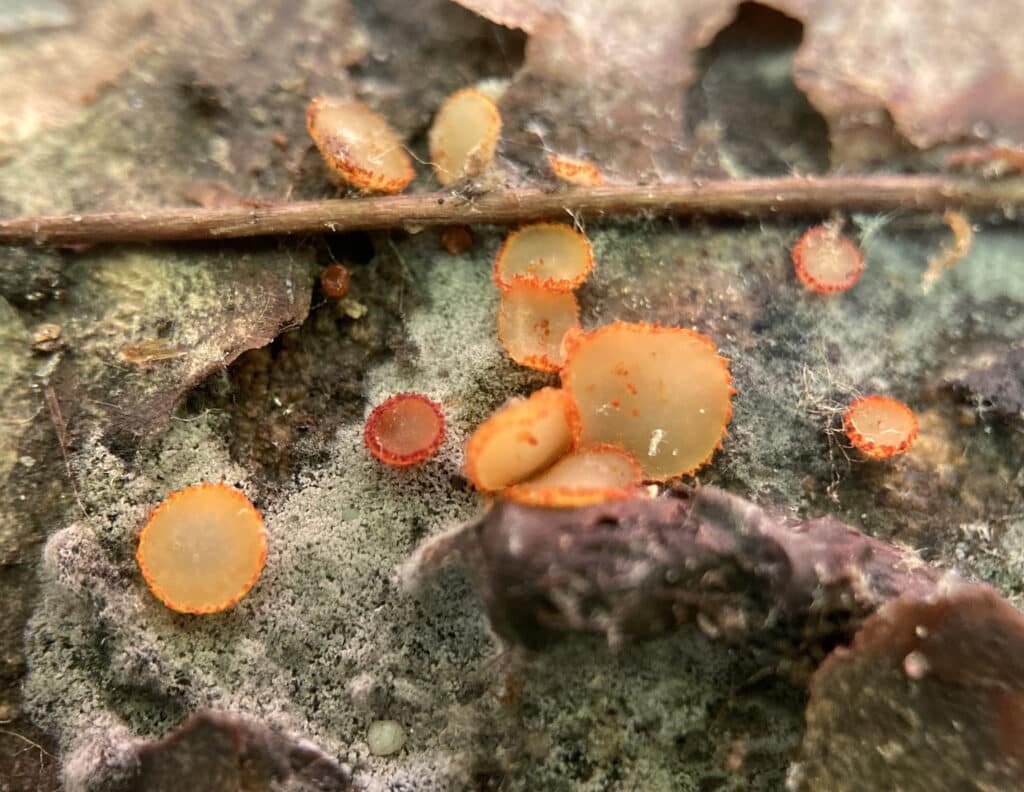
Arachnopeziza aurelia, photo courtesy of Ethan Crenson
All species of cup fungi in the genus Arachnopeziza are stunningly beautiful, so it’s difficult to pick a favorite. Arachnopeziza aurelia, the type species of the genus, is a bright orange cup with a red-orange crenulate margin. It grows in a sparse, cobwebby subiculum—a mat of wispy hairs that give the genus its name (Arachno: prefix meaning spider). I have not encountered it as often as the three white (and nearly identical) members of Arachnopeziza native to New York City. Phylogenetic analyses of the genus Arachnopeziza have shown that the genus is closely related to the powdery mildews that grow as plant pathogens.
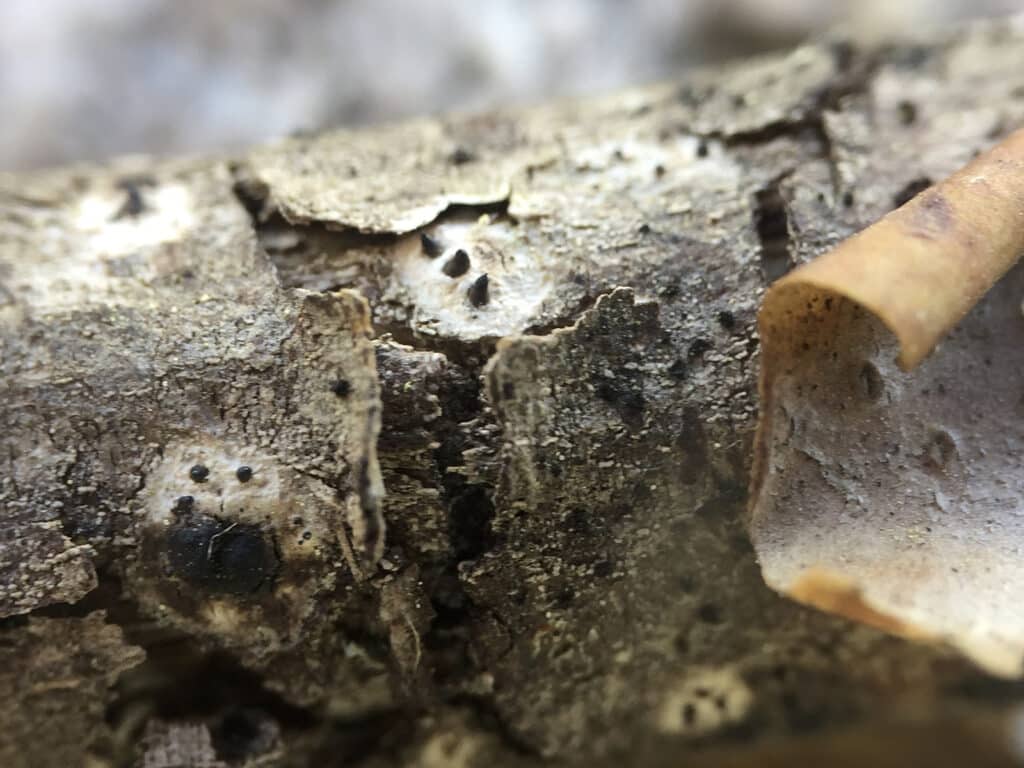
Nemania ethancrensonii, photo courtesy of Ethan Crenson
I have to end this list with a shameless plug. Yes, this species is a bit of an ugly duckling compared to the others on this list, but it’s named after me, so I’m including it. I found some tiny emerging black fruiting bodies surrounded by white lesions on a branch of oak in Green-Wood Cemetery in May of 2021. After doing some microscopy and coming to no conclusions about the identity of this pyrenomycete, I posted it to my favorite forum where experts discuss ascomycetes. An Austrian mycologist, Hermann Voglmayr, became interested and asked me to send him the collection. Over a year later he sent me his findings in a paper. He had concluded that the pyrenomycete was a new species in the genus Nemania (remarkable because it looks nothing like a typical Nemania) and he had named it for me. You can find Nemania ethancrensonii in the late winter and spring on hardwood sticks on the ground. As the species is “new” not much is known about it. So far it has been found twice in New York City and once in Ohio. See if you can find it, and if you do let me know.
Learn more about the New York Mycological Society, other fungi you can discover in the city, and join an upcoming NYMS event in natural areas. Special thanks to Jason Karakehian for assistance with the history of the taxonomic nomenclature of Angelina rufescens among other crucial details.